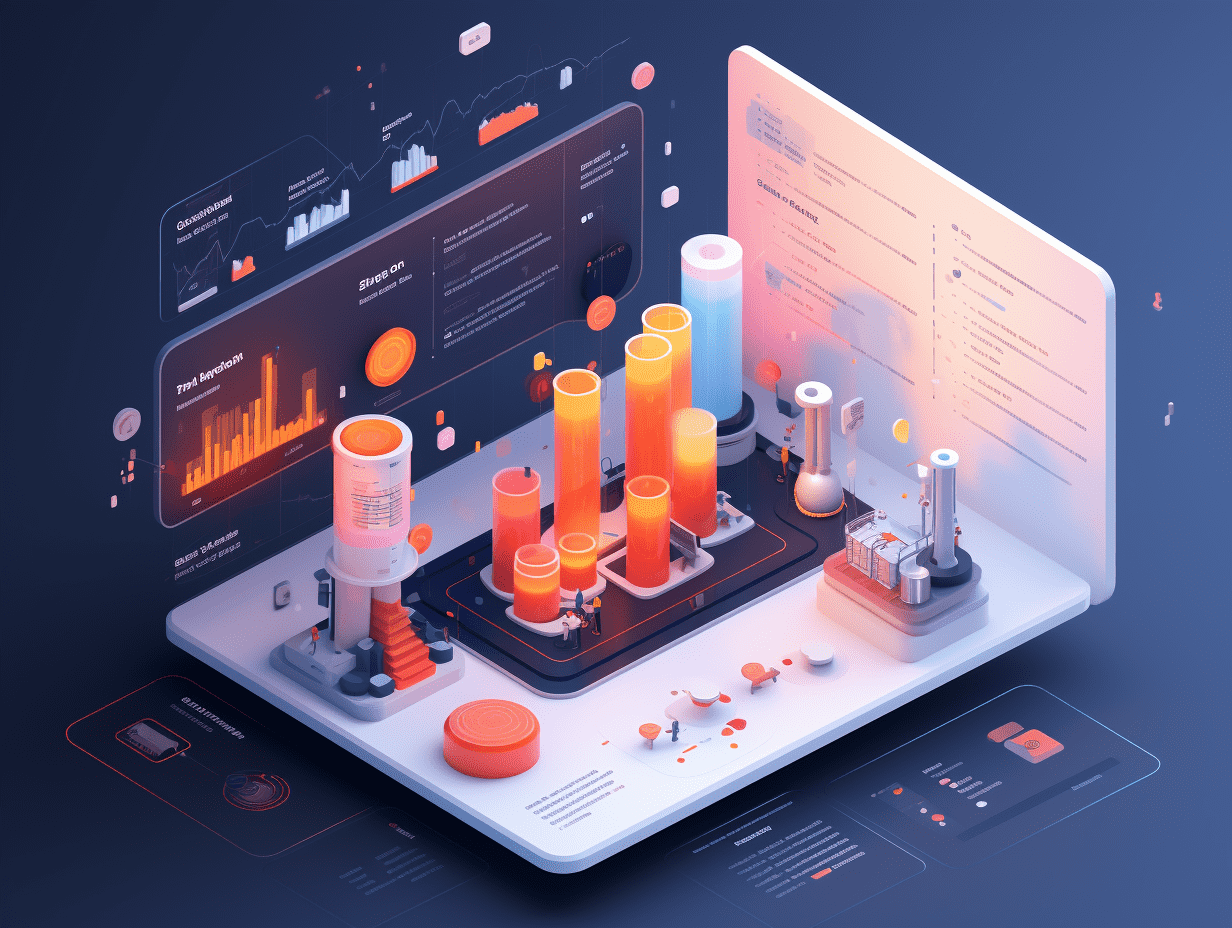US tech giants are borrowing crazily to pay for the dream of AI, at a time when concerns about bubbles are escalating and leverage risks are further "fueling the fire."
With growing concerns about the artificial intelligence (AI) bubble, Wall Street's worries about the tech giants taking on high debt to build AI infrastructure are increasingly intensifying.
With increasing concerns about the artificial intelligence (AI) bubble, Wall Street's worries about tech giants taking on high levels of debt to build AI infrastructure are intensifying. Although large tech companies' significant spending on AI is nothing new, raising record levels of debt for it is a new development. What worries investors even more is that this trend breaks with the past practice of tech companies using their large cash reserves to fund capital expenditures. Now, the use of leverage and the cyclical nature of many financing transactions introduce risks that were previously unseen.
The frenzy of tech giants issuing debt is exacerbating market concerns; Oracle Corporation is at the forefront of this trend.
Data shows that the top five companies in AI spending - Amazon.com, Inc. (AMZN.US), Alphabet (GOOGL.US), Microsoft Corporation (MSFT.US), Meta Platforms (META.US), and Oracle Corporation (ORCL.US) - raised a record $108 billion in debt in 2025, more than three times the average level of the past nine years.
Investors say that so far, they are not too worried about the recent debt issuance by tech giants affecting stock valuations because these companies still have relatively low leverage ratios. However, the sudden increase in the scale of debt issuance by tech giants raises questions about whether the bond market can absorb this surge in supply and exacerbates concerns about the growing AI spending - these concerns have weighed on US stocks, triggering a sharp correction this month after six consecutive months of gains.
While investor demand for tech company bonds has been strong, investors are asking for significant new issue premiums to absorb some of the new bonds. Junli Henderson said in a report that bonds recently issued by Alphabet and Meta carried premiums of about 10-15 basis points compared to existing bonds.
The spread in investment-grade credit defaults (which refers to the premium that higher-rated companies must pay above the yield of government bonds to attract investors) in the US is still at historically low levels, but it has risen slightly in recent weeks, partly reflecting concerns about the new wave of bond supply affecting the market.
Brij Khurana, portfolio manager at Wellington Management, said, "All these mega-cap companies are issuing debt. I think the market realizes that it won't be private credit markets or free cash flow that will fund AI. It will have to come from the public debt market." "You need capital from somewhere to finance all of this. What is happening now is people realizing that funding will almost have to flow from stocks to bonds."
It is worth mentioning that the debt issuance by Oracle Corporation has received special attention. The company issued $18 billion in investment-grade bonds in September to increase AI spending, and related banks also initiated $38 billion in debt issuance to fund data centers related to Oracle Corporation. Since then, Oracle Corporation's stock price surged in September, but it has since plunged by 33% from its all-time high on September 10, as investors reassess the company's aggressive capital expenditures' impact on its balance sheet and how it will fund its significant capital expenditures.
Investor concerns are reflected in financial derivatives related to Oracle Corporation - the five-year credit default swaps (CDS) reflecting leverage risks have soared to their highest levels in three years. Arnim Holzer, global macro strategist at Easterly EAB, said, "The rise in Oracle Corporation's CDS should not be surprising. These companies are investing significant amounts of money and committing to significant capital expenditures, some of which will be funded through debt. This doesn't mean Oracle Corporation is junk, but it should be more volatile."
Oracle Corporation predicts that its capital expenditures for the current fiscal year will be $35 billion, most of which will be used for its cloud business. Meanwhile, this significant expenditure is damaging the company's balance sheet, with its free cash flow expected to be negative $9.7 billion this year, compared to its first negative free cash flow since 1990. More importantly, Oracle Corporation's free cash flow is expected to further decrease in the next two fiscal years, potentially reaching $24.3 billion negative by the 2028 fiscal year.
S&P Global, Inc. recently revised Oracle Corporation's outlook to "negative" due to its expected capital expenditures and debt issuance to fund accelerated growth in AI infrastructure, leading to strained credit conditions.
This credit frenzy is not limited to Oracle Corporation. According to industry data, Meta has issued $30 billion in bonds, Alphabet has issued $38 billion in bonds, and Amazon.com, Inc. has issued $15 billion in bonds. Senior credit analyst Robert Schiffman said, "We may be in the early stages of AI capital expenditure construction, but it also means we may be in the early stages of balance sheet re-leveraging. I am concerned that this issuance frenzy may only be the beginning of things in the coming years."
Risks are quietly accumulating
Just a few months ago, AI spending mainly came from a few companies with strong balance sheets and steady growth in free cash flow. But now, the situation has changed, and the risk profile of the tech industry has changed with it. This new dynamic was evident on Thursday when tech stocks first surged due to NVIDIA Corporation's (NVDA.US) strong performance, then dropped significantly as investors evaluated the capital needed to build AI infrastructure and the ties between these investments and WINOX.
Lisa Shalett, Chief Investment Officer at Morgan Stanley Wealth Management, said, "I see this as a sign that the AI story is maturing and entering a new stage, a stage likely characterized by more volatility and additional risks." She added, "We have seen the ecosystem expand to include companies like Oracle Corporation and CoreWeave with weaker balance sheets and more debt, and we have seen more interwoven and cyclical revenue relationships. This interconnectedness between participants brings systemic risks."
Until recently, capital expenditures were seen as a necessary condition for companies to participate in AI. Some investors even viewed it as a positive reflection of corporate confidence. However, as Wall Street professionals hope for stronger investment returns, capital expenditures are receiving more scrutiny, and adding debt to the equation only exacerbates the issue.
Larry Hatheway, Global Investment Strategist at Franklin Templeton Research Institute, said, "There have been some doubts in recent weeks around the AI spending story, related to companies needing to be able to finance this, including through debt financing."
Brian Levitt, Chief Global Market Strategist at Invesco, warned, "Some companies are committing to massive investment but do not have enough cash flow to support it, so they may need to take on significant debt to fund future investments." "While this model may work before there is turmoil in the credit markets, I think the market is increasingly focused on this risk."
The increased debt of tech giants is also bringing a new layer of concern to the market. Despite the push from promises of high AI returns, investors remain cautious as the technology has not yet proven the profitability necessary to justify such large-scale capital expenditures. Sage Advisory, in a recent report, estimates that AI capital expenditures will rise to $600 billion by 2027, exceeding $200 billion in 2024 and nearly $400 billion in 2025, with net debt issuance expected to reach $100 billion by 2026.
Bob Savage, head of macro strategy at BNY Markets, said, "When companies that don't need to borrow money are borrowing money for investments, this sets a bar for the return on those investments. We're in a 'give me money' phase."
Despite the increase in leverage, investors are generally still positive about tech giants because of their enduring profit growth and strong competitive positions. Furthermore, according to UBS Group AG estimates, tech giants plan to finance about 80% to 90% of their planned capital expenditures from their own cash flow. Sage Advisory's research report indicates that top mega-cap companies are expected to shift from having more cash than debt to having only moderate levels of borrowing, with leverage ratios remaining below 1, meaning that their total debt will be less than their earnings. Analysts at Goldman Sachs Group, Inc. also said that, except for Oracle Corporation, mega-cap companies could absorb up to an additional $700 billion in debt and still be considered safe, with leverage ratios lower than typical A+ rated companies.
Bob Savage added, "To say that these bond issuances are a major turning point, that the AI bubble will burst, seems a bit exaggerated. Debt may complicate the situation, but I don't think it will change the fundamental argument."
Related Articles

Service sector recovery drives US business expansion in November, recording the strongest growth in four months.

Will interest rates continue to be cut in December? Collins and Logan remain cautious, the top three of the Federal Reserve are dovish.

Risk aversion frenzy sweeps the market! U.S. bonds are expected to achieve their largest increase in several weeks.
Service sector recovery drives US business expansion in November, recording the strongest growth in four months.

Will interest rates continue to be cut in December? Collins and Logan remain cautious, the top three of the Federal Reserve are dovish.

Risk aversion frenzy sweeps the market! U.S. bonds are expected to achieve their largest increase in several weeks.






